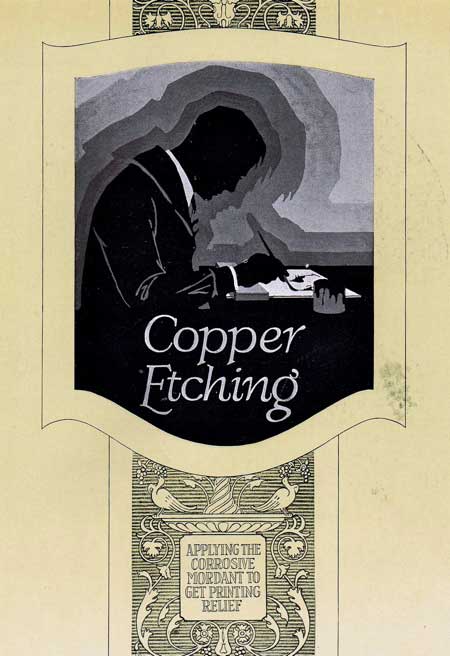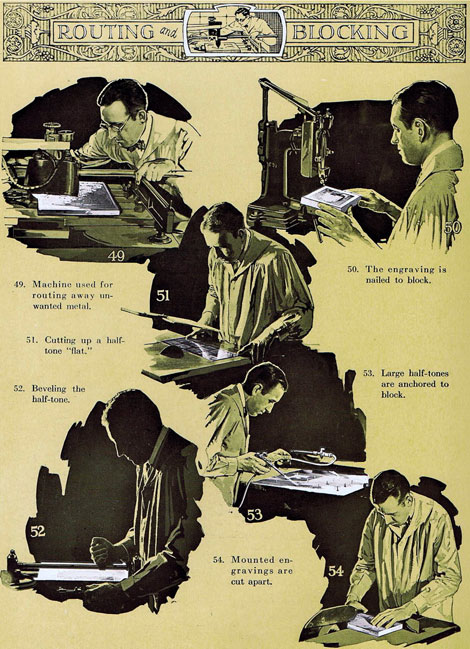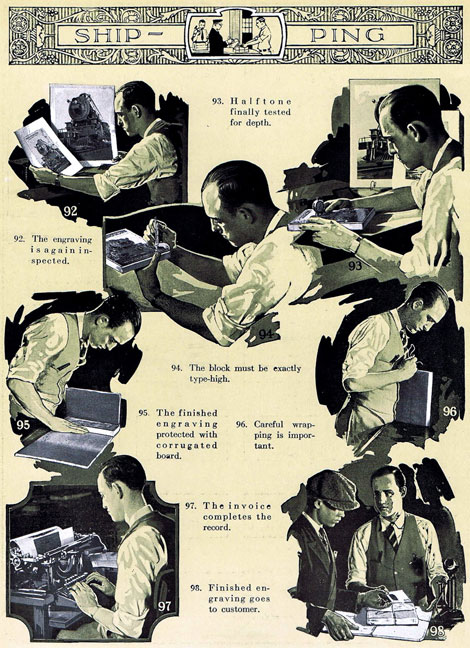Scanning Around With Gene: When Halftones Were an Art Form

These days, most graphic designers don’t even know what a screen angle is, let alone how dot shapes can affect the reproduction of halftone photographs and artwork. We scan, we import to Photoshop, and then we rely on InDesign or QuarkXPress to figure out the details necessary to accurately reproduce the image.
That wasn’t always the case. Throughout history, printers have used various techniques to reproduce images, many of them complex and time consuming. For several decades, photo engraving was the dominant method. Today’s images are all from a wonderful 1929 book titled “The Art of Photo Engraving,” published by the Hammersmith Engraving Company of Chicago, Illinois. Click on any image for a larger version.


The book, a how-to of the craft of photo engraving, outlines the steps (almost 100!) involved in taking an image from original photograph to metal plate.


The book defines photo engraving as “an interpretive art founded upon photo-mechanical processes enhanced by skill and artistry, which translate and convert tone values into relief printing surfaces, from which exact reproductions of the original can be printed innumerable times.”


The authors even quote French poet Jean Cocteau, who wrote, “[T]hanks to the photo-engraver, beauty sees itself at a single glance in a hundred thousand faithful mirrors.” The practitioners of this craft took their art very seriously.


Turning a photograph into a metal printing plate is a complex process involving many steps of photography, acid etching, hand metal work, polishing, etc., etc., etc.


It’s no surprise that photographs and illustrations were somewhat of a rarity before modern methods. Each image required a large commitment and a fair amount of expense. Setting type was also a big undertaking, so people tended to publish only those things that were either worthwhile or would sell well.


It’s hard to realize today that numerous people were involved in every reproduced photograph, many of them having spent years learning their craft, each specializing in one step in the process.



But labor was comparatively cheap back then, and the printing process employed many more people than it does now.


Things today are easier, and they don’t involve toxic chemicals and dangerous processes. However, we’ve watched entire industries and long-standing professions go by the wayside as technology streamlined the process of taking images and text from concept to printed form.


The next time you import a photograph or illustration into your page-layout file, think back to the time when it took days and a cadre of professionals to achieve the same results. It makes you appreciate how far we’ve come and the craftsmanship that is now built into the software we take for granted.
Follow Gene on Twitter.
This article was last modified on May 15, 2023
This article was first published on October 28, 2011



